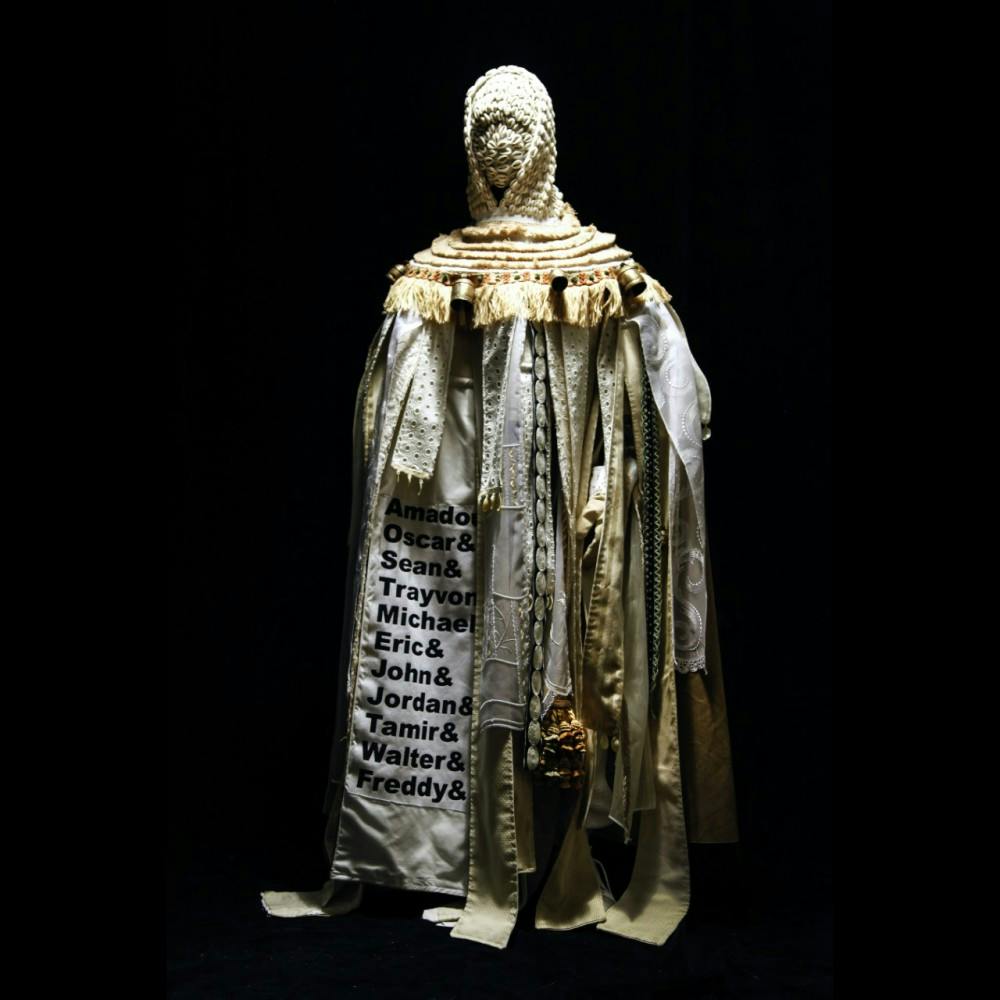As a researcher and as an artist, Fahamu Pecou’s work is centered on representations of the Black male identity. In his dissertation, the multimedia exhibit “DO or DIE: Affect, Ritual, Resistance” on display at the Sonja Haynes Stone Center, Pecou combines the academic with the artistic to ask: "What kind of life could you live if you weren’t afraid to die?"
This multimedia exhibit combines paintings, drawings, videos and sculpture, and fuses hip hop culture with traditional West African spiritual practices. Pecou said this project addresses the spectacle of Black death and the long history of violence against Black existence.
“This idea that these narratives around Black existence are so intertwined and bound up in these specters of death is something that I wanted to use my research and my work to combat,” Pecou said.
Pecou said that he wants to reframe the understanding of Black existence, turning away from violence, pain and destruction, and towards hope — a story of survival, resilience and beauty.
“When you’re constantly bombarded with images of trauma, your own sense of self begins to be shaped and defined by that trauma,” Pecou said. “I wanted to do something that would help us to move beyond that trauma.”
For Pecou, art is a powerful medium for these themes because it transcends language itself.
“Art operates at a level of language that goes beyond words,” Pecou said. “It is a form of communication that doesn’t speak any particular language or dialect. It is something that is innately human.”
The title of this exhibit, “DO or DIE: Affect, Ritual, Resistance,” addresses the multi-faceted nature of this exhibit’s themes. Pecou said the name “DO or DIE” comes from the idiom within hip-hop culture, expressing the sentiment of either taking direct action or not. Affect refers to affect theory and his goal of using theoretical concepts to connect to individual emotions. Ritual refers to the African spiritual tradition at the heart of his research. Resistance addresses the sense of resistance embedded within the project — the sentiment that despite trauma, one can find hope.
This exhibit is a part of the Stone Center’s larger project “The 1619 Collective Memory(ies).” 1619 marks the year when the first group of enslaved Africans was brought to the Jamestown settlement, which many consider to be the beginning of slavery in the US. "The 1619 Collective Memory(ies)" examines the beginning of slavery from the points of view of all affected — not only Africans, but also Native Americans and Europeans, said Stephanie Cobert, public communications officer for the Stone Center.



